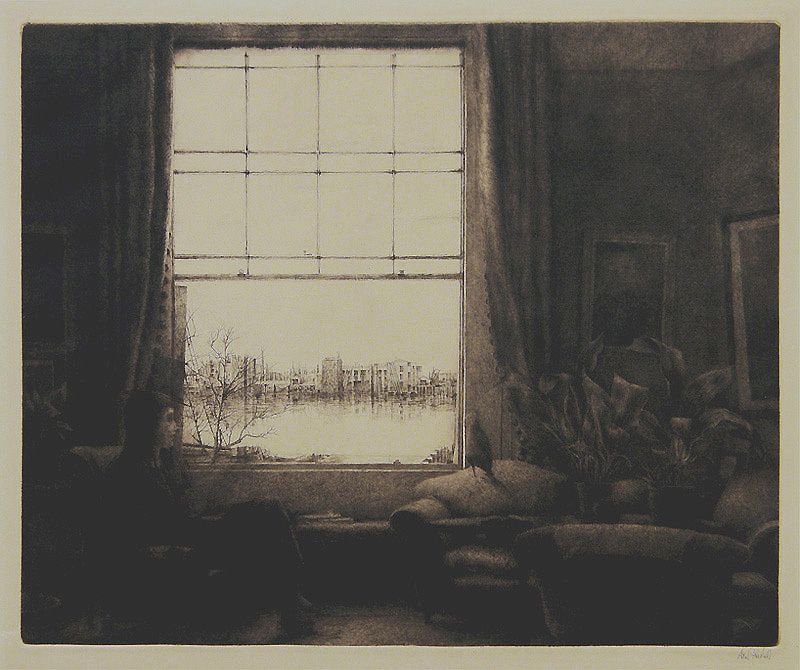
19th, 20th & 21st Century Fine Prints
707-546-7352 · fax 707-546-7924 · web: www.annexgalleries.com · email: artannex@aol.com
The Window, Wauxhall, London (Vauxhall) by Axel Fridell

The Window, Wauxhall, London (Vauxhall)
Axel Fridell
The Window, Wauxhall, London (Vauxhall)
Axel Fridell
1894 - 1935 (biography)"The Window..." one of Axel Fridell's signature prints, went through six states. The first showed a man in a top hat, reading by window light. In this state, the third, the man, Mr Stewart, has been changed to a woman, gazing out the window at the Thames. There are buildings visible through the window, across the Thames. In this state (iii/vi) there still are vestiges of the top hat, reading glasses, and the man's shoes from the earlier states that do not appear in the final states.
Fridell traveled to London in 1926-27 and found lodging overlooking the River Thames to place himself in J.A.M. Whistler's environment. He proceeded to execute a series of interiors and self portraits, using only window light as a source. The result were images with the Thames in the background which appear to have been influenced by Whistler's 'Rotherhite' and Thames views. Fridell captures with his detail and precision the "atmosphere" that Whistler achieved with his wiping.
The Axel Fridell Society notes about his etching:
"In London in 1926-27, Axel Fridell made the first print in a series of interiors while he began a new set of self-portraits at the same time. This was not primarily a matter of subtle effects, but rather involved a more full-bodied chiaroscuro. Fridell covered the surface of the plate with tightly packed lines, parallel lines or crosshatching, in large areas. The first portrait from London, 'Self-Portrait in Lamplight' (Självporträtt i lampljus), 1926, took on the appearance of a mezzotint due to the system of crosshatching....
Chiaroscuro was well suited to these intimate motifs, the quiet interiors with soft rays of light illuminating the scenes from his atelier or his home. Both these motifs and techniques link Fridell to Rembrandt, who was Fridell's principal guiding star during his prime.
However Fridell's most characteristic interiors differ from those of Rembrandt and the many 17th century Dutch interiors and genre images because of the large window in the background and its view of the world outside. Rather they call to mind the Golden Age of Danish painting, another of Fridell's sources of inspiration. The relationship is particularly striking in the interior, "Old Studio", 1927, (and 'The Window') with its geometric composition. Here Fridell's earlier painting attempts were given a comparable graphic form. The view from a window was a central theme in the art of the early 19th century, a way to create a connection between the intimate, everyday sphere and something far beyond. For this reason Fridell used a ray of sunlight in many of his paintings. In others, it is the combination of objects that provides direction, together with whatever is presented concretely.
In his prints he composed other views than those which were actually found outside his windows. In the London images, the symbolically loaded river scenes recur, and this changes from one state to another."
